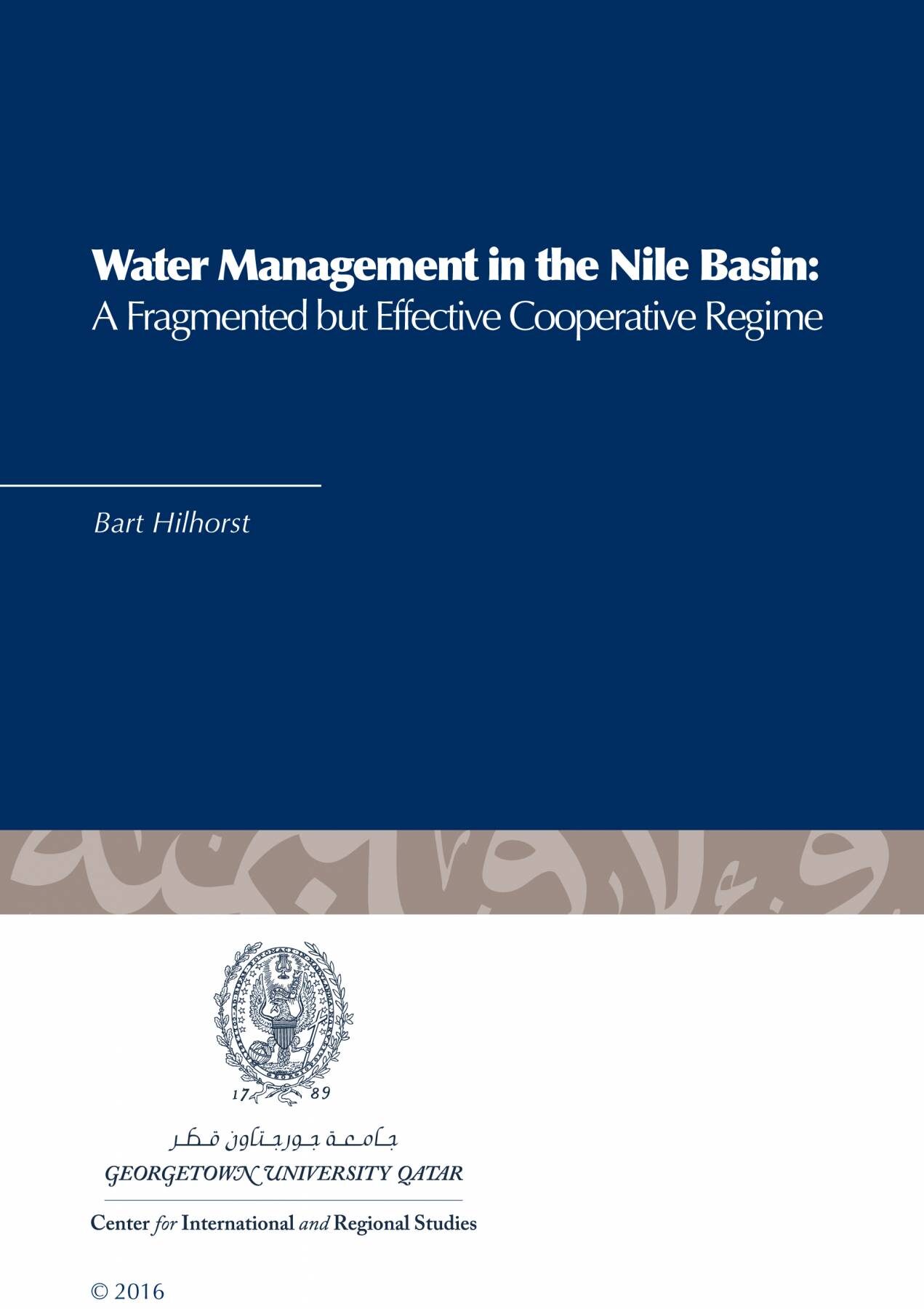Water Management in the Nile Basin: A Fragmented but Effective Cooperative Regime

To cite this publication: Bart Hilhorst, “Water Management in the Nile Basin: A Fragmented but Effective Cooperative Regime,” CIRS Occasional Paper no. 17 (Doha, Qatar: Center for International and Regional Studies, 2016).
Ongoing expansions of hydro-infrastructure in the Nile basin, combined with infrastructure completed in the past decade, are increasing the capacity to regulate the Nile as well as the benefits accrued to the Nile waters. No longer reliant on funding from the World Bank and Western donors alone, Nile water development is accelerating in a number of upstream riparian states. Hence, the river Nile upstream of the Aswan High Dam is gradually being transformed from a natural to a regulated river. Hydro-infrastructure projects represent a strong driver for issue-based cooperation among the most affected riparians, but it is noted that the basin-wide perspective is not considered in these ad hoc arrangements. This paper describes the emerging cooperative regime in the Nile basin and analyzes its effectiveness. It presents an inventory of where cooperation among Nile riparians is needed, and discusses the required level of cooperation. It looks at the benefits of cooperation that are not related to a specific geographic area. The paper then identifies four distinct sub-basins that have substantial autonomy in managing their water resources. It concludes that the emerging cooperative setup is logical and for now quite effective, and does not lock in arrangements that may prove inconsistent—at a later point in time—with the overall objective of reasonable and equitable use of the Nile waters by each riparian state. Hence, the emerging cooperative regime arguably represents a positive step in the evolution from a basin without cooperation to a basin managed to optimize the use of the Nile waters for the benefit of its people.